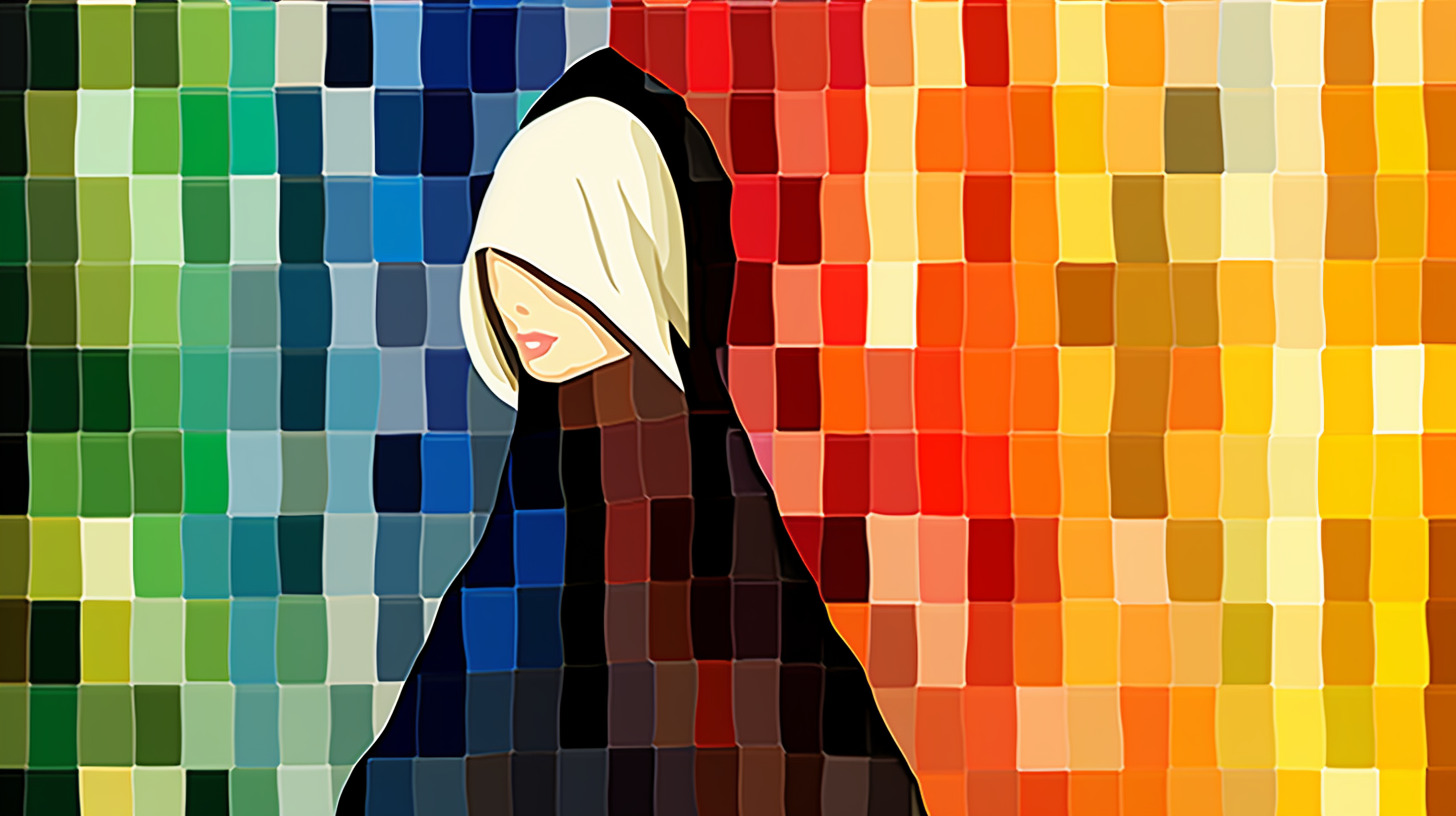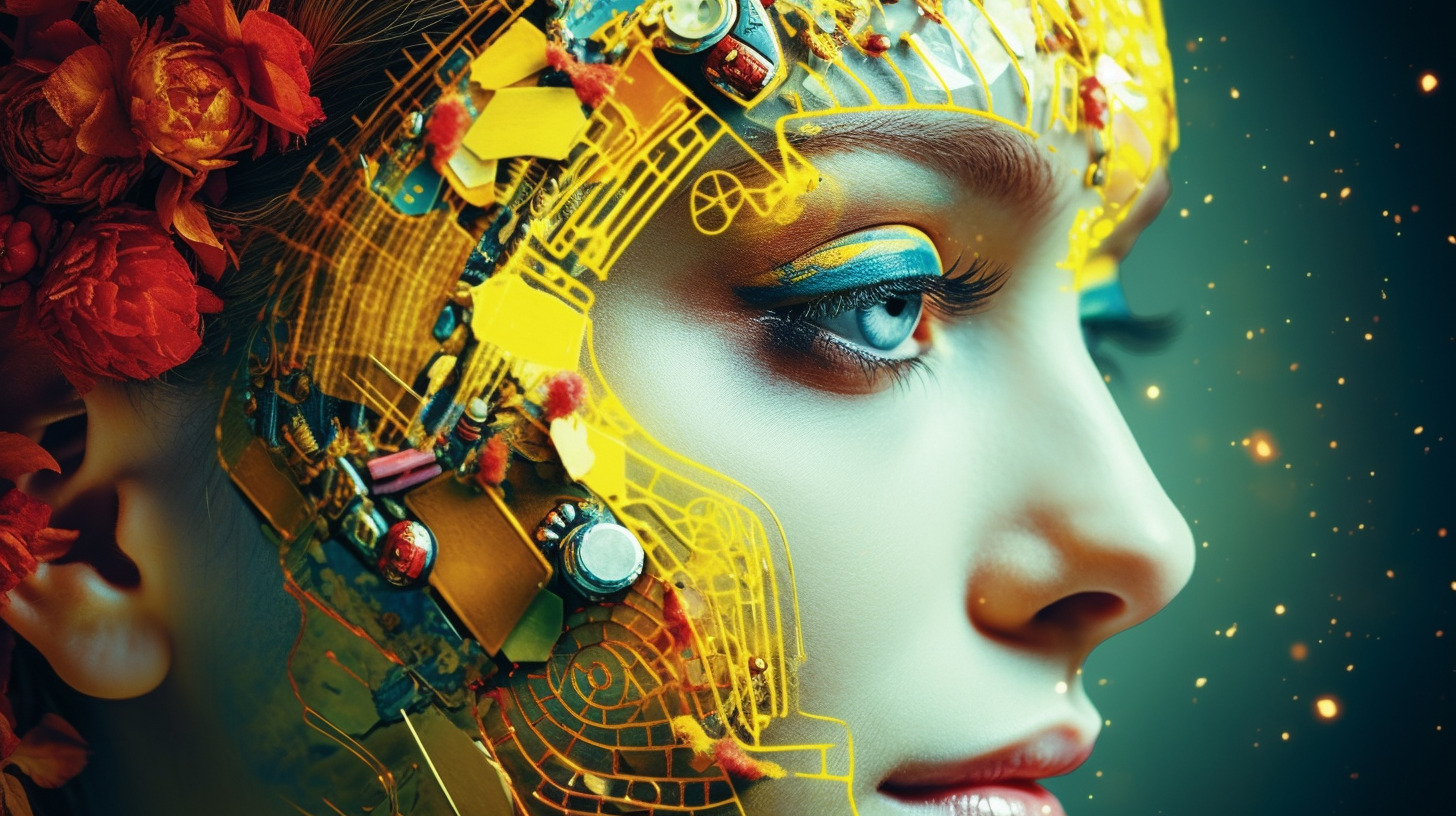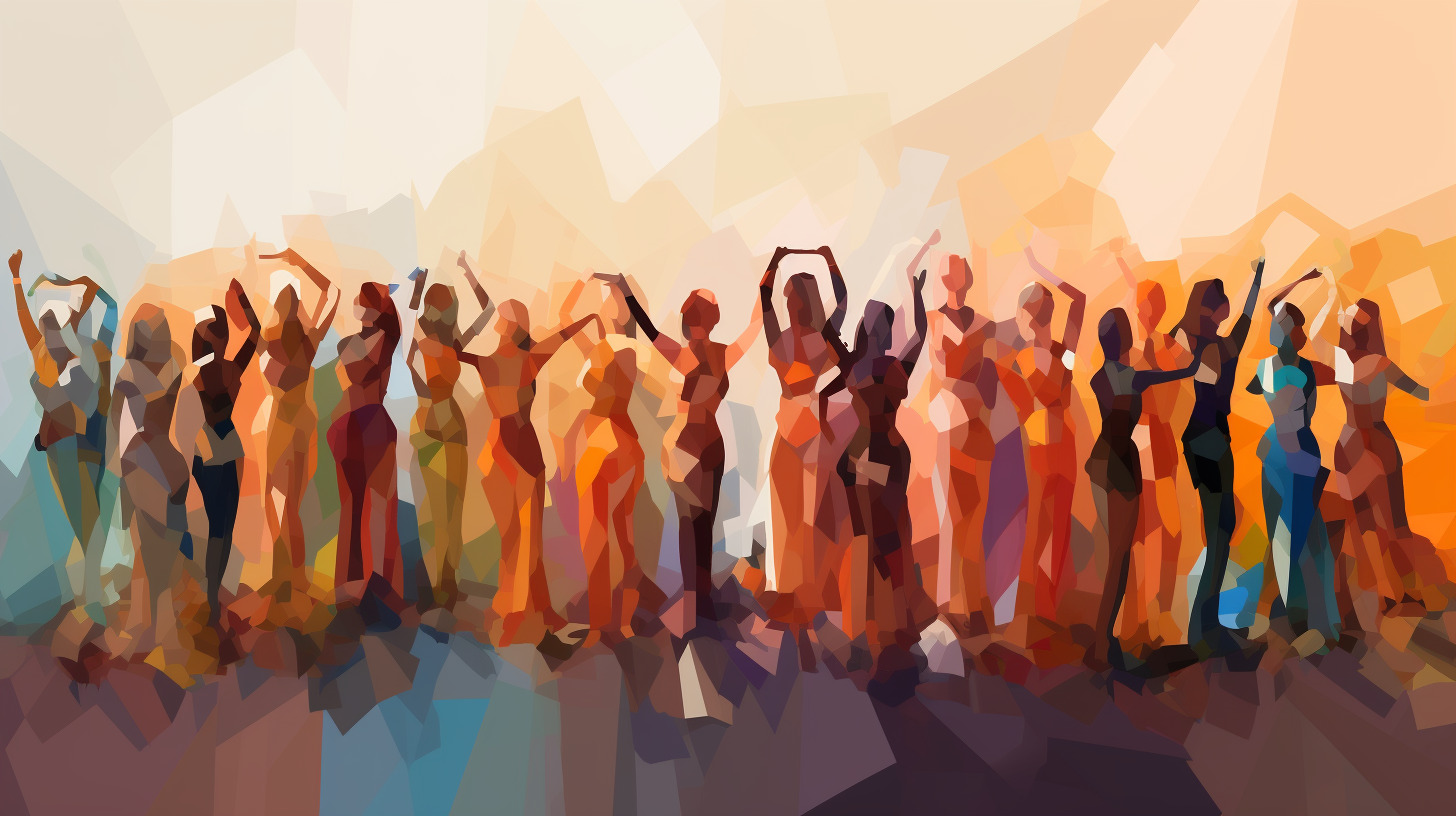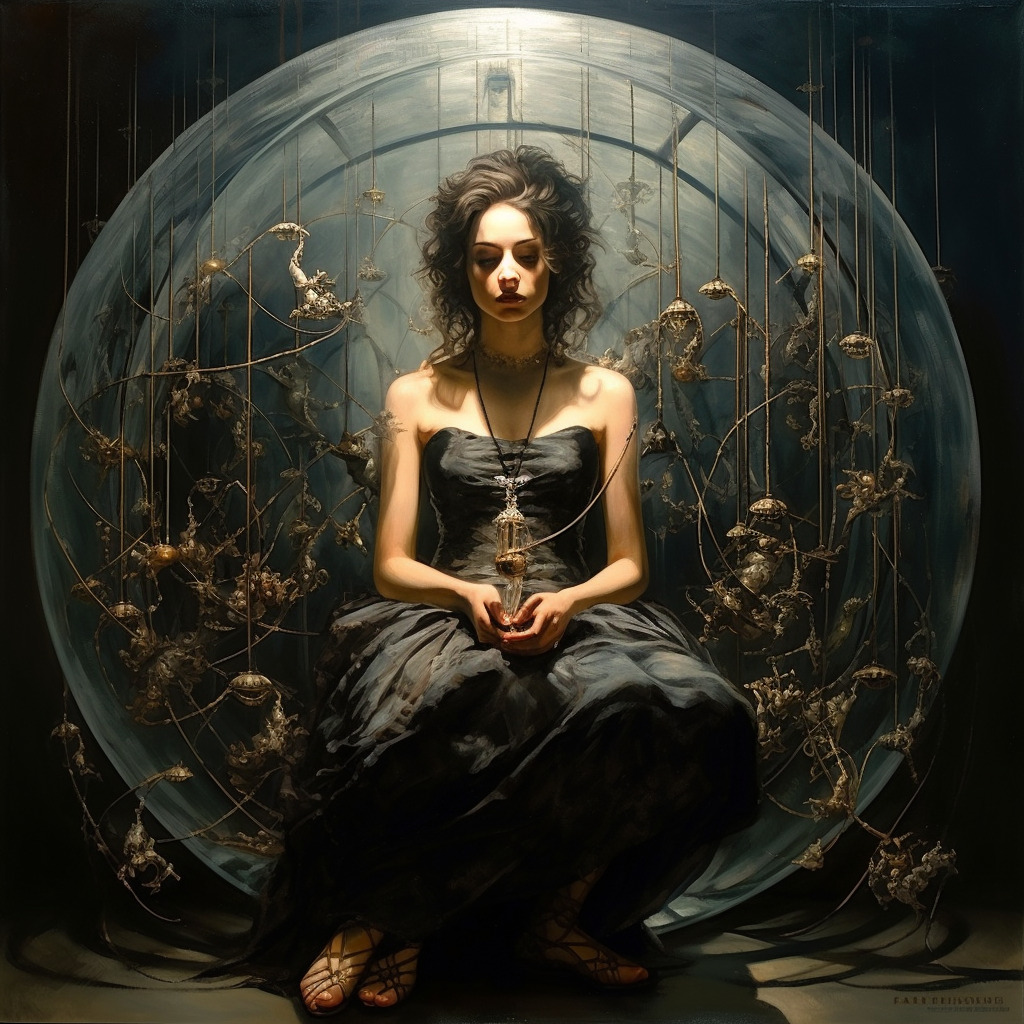In an era where technology and art are becoming increasingly interwoven, a new breed of female artists is emerging. These women are blending traditional painting techniques with artificial intelligence (AI) to create groundbreaking works.
But while the AI art scene is booming, female artists remain underrepresented. This article aims to shine a spotlight on contemporary female artists who are pushing the boundaries of AI art. We’ll delve into their unique approaches, the challenges they face, and what the future holds for female artists in the AI art landscape.
Sougwen Chung
A Female Artist in AI
Sougwen Chung is a Chinese-Canadian female artist based in New York. She’s known for her multidisciplinary approach, blending traditional painting with digital media. She often collaborates with a robotic arm named “D.O.U.G.” (Drawing Operations Unit: Generation_). Her work explores the relationship between humans and machines, focusing on themes like memory, identity, and the digital diaspora. Chung’s art is a testament to the innovative spirit of female artists in the AI field.
Anna Ridler is a female artist who uses Generative Adversarial Networks (GANs) to create her art. She believes this gives her more control over the end result. Her work has been exhibited at Ars Electronica, Tate Modern, and the V&A. Ridler’s art challenges the traditional boundaries of painting and sculpture, proving that female artists can be at the forefront of technological innovation.
Anna Ridler
A Female Innovator in AI Art
Helena Sarin
A Female Pioneer in AI Art
Helena Sarin is another female artist who uses GANs in her work. She founded Neural Bricolage Studio to promote AI-assisted artwork. Helena uses GANs to generate synthetic data sets for her own photography and artwork. Sarin’s work is a prime example of how female artists are pushing the boundaries of what is possible in AI art.
Cornelia Es Said is a Berlin-based female artist who fuses Realism and Expressionism in her work. Her art serves as a bridge between human emotion and artificial intelligence. She primarily works with oil paints and is always up for experimentation. Es Said’s work is a reflection of the emotional depth that female artists bring to the AI art scene.
Cornelia Es Said
A Berlin-Based Female Artist in AI
The Gendered Lens: Is There a Difference?
According to an article from Ars Electronica, the AI algorithms are often biased due to the low proportion of female programmers and women in the IT sector. This leads to a skewed representation in AI art as well. Source

The Blurring Line Between Curation and Creation
Artists are both creators and curators in the AI art world. This dual role adds another layer of complexity to the artistic process. It’s not just about creating something from scratch but also about choosing what to keep or discard from what the AI produces. This creates a dynamic interplay between the artist and the machine, each influencing the other in a continuous loop of creation and refinement.
The Copyright Conundrum
Interestingly, the art produced by AI does not currently enjoy copyright protection, raising questions about the value and ownership of AI-generated art. According to the US Copyright Office, intellectual property can be copyrighted only if it was the product of human creativity. Machines and generative AI algorithms, therefore, cannot be authors, and their outputs are not copyrightable. This raises questions about the value and ownership of AI-generated art and adds another layer to the debate about what constitutes ‘creation’ in the art world. Source

The Gender Gap in AI ART
Despite the increasing number of women entering the art and tech worlds, female artists remain underrepresented. To address this gender gap, influencers like gallerists, curators, art critics, and art buyers can take proactive steps. Adopting ‘blind’ art evaluations, where the artist’s identity is concealed during the initial review, could mitigate gender bias. Additionally, creating mentorship programs specifically for female artists in AI could provide them with the resources and network to succeed. Virtual galleries could also feature ‘Women in AI Art’ months to spotlight emerging female talent. Source
The Future of Female Artists in AI Art
As we look ahead, the AI art market, already estimated to be worth more than $100 million, promises a world where AI doesn’t just assist artists but collaborates with them. This creates a symbiotic relationship that transcends what we currently understand as art.
In this future, AI algorithms could be designed with a “gender-conscious” lens, actively working to promote diversity and inclusion in the art they help create. These advanced AIs could challenge societal norms and stereotypes, pushing the boundaries of what is considered “feminine” or “masculine” in art.
Virtual reality could offer new platforms for (not necessarily only) female artists in AI to showcase their work. Imagine walking through a VR art gallery curated by an AI, where each room adapts to your emotional responses, offering a personalized art experience.

Ethical considerations, such as the use of artists’ works as training data without compensation, will likely lead to new forms of digital rights management. With blockchain technology and NFTs, artists could license their “creative DNA” to AI systems, receiving royalties whenever their unique style influences a piece of AI-generated art.
Legal battles over copyright and ownership are on the horizon, but so are new opportunities for collaboration. Open-source art platforms could democratize the art world, allowing artists to share, modify, and build upon each other’s work in a collective creative endeavor.
In this cooperative future, female artists will be equal partners in shaping the ethical, aesthetic, and social dimensions of AI-generated art. As AI continues to evolve, so will the role of the artist, with artists in AI at the forefront of this exciting new frontier.


